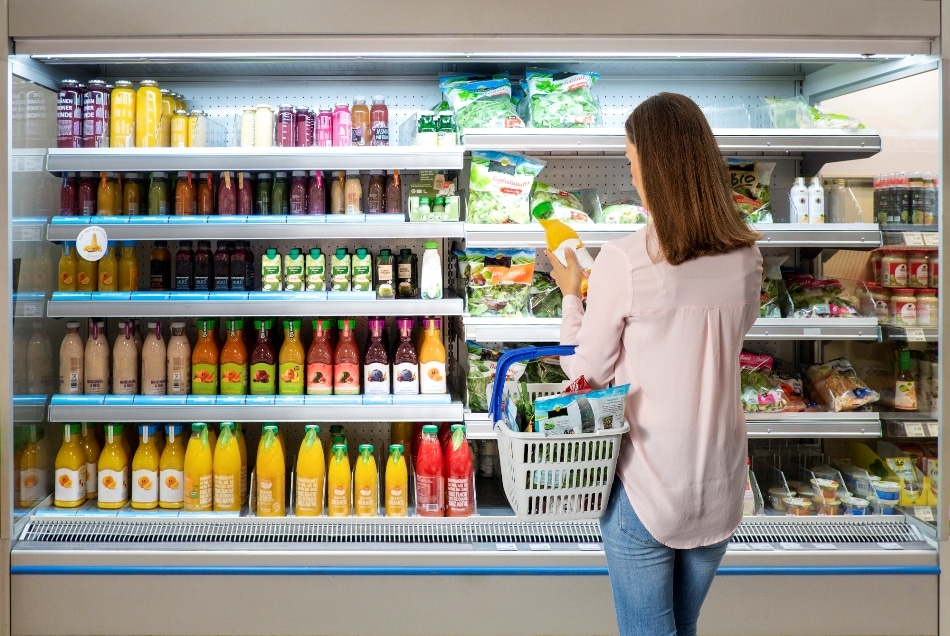As part of a Clariant-wide program to create a more sustainable plastics industry, the Packaging Market Segment within the Masterbatches Business Unit is working to help brand owners and packaging producers realize their objectives for creating packaging that is more environmentally friendly.

Clariant’s comprehensive portfolio of additive masterbatches, together with unparalleled in-house expertise and collaboration with other industry organizations, allows them to offer solutions in four important areas:
- Developing packaging that is designed to be highly recyclable
- Making plastics packaging that can be re-used easily
- Supporting use of bio-based polymers
- Increasing acceptance of compostable packaging
“Plastics packaging is a vital resource for brand owners and represents a safe way to deliver products to the consumer in optimal condition,” asserts Alessandro Dulli, Clariant Masterbatches Global Head of Packaging. “Packaging also plays an important role in brand differentiation and brand identity. We must not forget that it is important that industry and consumers work to create a more sustainable packaging model. No single player can achieve these goals alone. They require the collaboration of all stakeholders and that is what we are working toward in this new intiative.”
Design for Recycling
Recycling is already recovering large volumes plastic waste for reintroduction to the marketplace as new packaging, but there are still major challenges for increased use of post-consumer resin (PCR) and Clariant is working to overcome them in several ways:
- New oxygen-scavenging additive masterbatches reduce the need for multi-layer, multi-material packaging to extend shelf-life of packaged goods. With only one material involved, the plastic is more readily recyclable.
- CESA®-IR additive masterbatches are now available to make dark-colored plastics visible to the near-infrared (NIR) sensors used in the polymer sorting systems so they can be effectively recycled.
- Innovative liquid masterbatches make it possible to reduce the carbon footprint of complex logistic and heavy inventories.
- Chain extenders, odor control technology, color brighteners and other additives that improve the quality and marketability of plastic materials that are recycled.
Reuse
“If all plastic packaging could be reused just one time, the amount of material entering the waste stream would be cut in half immediately,” notes Alessandro Dulli, “and while we can’t hope to re-use all plastics, we owe it to ourselves and our planet to do the best we can.”
Currently, most packaging is designed to complete its life cycle as soon as the product is delivered, but parameters need to be re-set if containers are to survive for longer periods. Clariant products available to support such an effort include additives that:
- Increase the durability and scratch resistance of plastics
- Decrease the tendency of materials to yellow over time
- Resist degradation due to washing and sterilization
- Prevent color fading and other aesthetic losses
- Control stress cracking and brittleness
Clariant co-creates solutions with customers specialized labs, such as those in the Clariant ColorWorks™ network, to develop and test material under simulated aging conditions to confirm life-cycle timelines. This expertise supports complex global projects to safeguard brand identity and also offers support with regulatory issues around extending product life-cycles.
Bio-based Polymers
Bio-based polymers, more commonly referred to as bioplastics, are made from renewable materials rather than fossil materials like petroleum or natural gas. They are gaining a lot of interest because they use plant-based feedstocks and may result in lower carbon emissions than other polymers. These resins are essentially identical to conventional plastics and can benefit from the same design-for-recycling solutions referenced above. At the same time, Clariant is supporting customers that dream of offering a 100% bio-based product by developing develop colors and additives using similarly renewable feedstock.
Compostable Polymers
Compostable polymers – polylactic acid (PLA) or polyhydroxyalkanoate (PHA), for instance – are often held up as a possible solution to the problem of littering since they are more easily degraded over time in comparison to non-compostable plastics. And they may also represent an interesting solution for food applications, since food-contaminated packaging cannot be recycled. Packaging made of compostable polymers may provide the answer, since contaminated waste can be composted.
Clariant is working hard to further improve the (already good) shelf life of biopolymers, such as PLA, and the aesthetic of these materials, with a range of vibrant colors that help to preserve and enhance brand identity. With more than 20 years’ experience in manufacturing masterbatches suitable for compostability and certified by Technical Inspection Associations, such as TÜV, Clariant ensures that all necessary parameters are met.
“At Clariant,” says Alessandro Dulli, “we are proud to be imagining the future, driving sustainability and developing practical solutions to the challenges we face because, at the end of the day, Designing for the Environment is really just about designing for us all”.
Discover more on how Clariant is supporting a circular economy for plastics through sustainable innovations and collaborations. Meet Clariant leaders and partners at our “Symphony of Collaboration” K 2019 media event on Thursday October 17, 8:15am media breakfast followed by 9am press conference, Booth 8AJ11. Register by emailing Stefanie Nehlsen at [email protected].